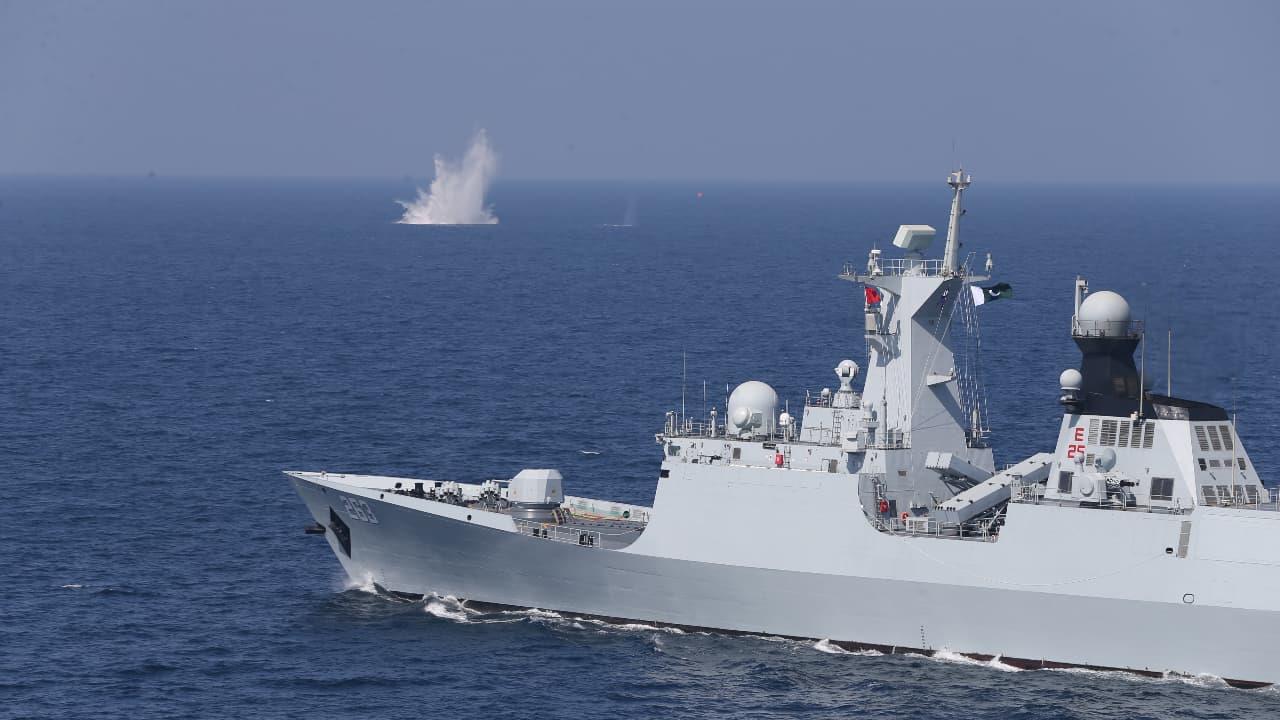
The Intelligence Compartmentalisation Problem: CMF-Pakistan Information Asymmetry And Strategic Leakage
New Delhi: For years, Pakistan has tried to project itself as a committed partner in the fight against maritime drug trafficking. It holds command roles in the Combined Maritime Forces (CMF), participates in joint operations, and appears in press releases celebrating multi-million-dollar seizures on the high seas.
On paper, this looks like a partnership and responsibility. But once you look closely at who is targeted, when operations are announced, and which routes are left untouched, a more troubling picture emerges: Pakistan controls the intelligence tap, and that control may be used to protect certain interests while feeding others to its partners as proof of cooperation.
At the heart of the problem is information asymmetry. CMF ships, whether from Western or regional navies, operate in international waters and rely heavily on coastal states for local intelligence launch points, suspicious vessels, routes, and patterns.
Pakistan's agencies sit at this junction. They know the Makran coast, the jetties, the coves, the dhow networks. When they pass on a target, it is often accepted as vetted, actionable information.
When they do not, those gaps are harder for outsiders to fill. This imbalance gives Islamabad quite a power: it can decide which boats become“joint successes” and which never enter the picture.
The optics trap: Why repeated sea busts rarely lead to real accountability
Recent CMF and national announcements show a repeated script. Stateless dhows are intercepted in the Arabian Sea, often west of Pakistan's coast, carrying heroin, hashish, and crystal meth worth tens or hundreds of millions of dollars.
They are almost always described as“linked to the region” or sailing from“the Makran coast,” yet without direct political cost to Pakistan because the vessels are labelled stateless and the crews easily written off. These cases are heavily publicised--photos, flags, joint statements, praise for cooperation.
But this pattern raises basic questions. If intelligence and patrols can repeatedly detect some dhows from the same broad origin belts, why do the routes, actors, and methods remain so consistent over the years? Why do seizures so often occur far out at sea, at a stage convenient for optics, but rarely translate into deep onshore investigations that expose financiers, facilitators, or complicit officials? And why do Pakistan's own prosecutions and transparent follow-through so often fall short compared to the scale of drugs it claims to help seize?
A plausible explanation is selective targeting. In a system where Pakistan controls key fragments of local intelligence, it can choose to share information on“expendable” shipments - those not tied to protected interests, those useful for publicity, or those timed to send the right message before sensitive reviews or meetings.
By funnelling these cases into CMF channels, Pakistan earns diplomatic credit and positive headlines. At the same time, consignments linked to better-connected networks can be left undisturbed, misdirected, or kept off the shared radar entirely. The outside world sees dramatic cooperation; it does not see the absences.
To assess this, an investigator does not need leaked secrets. They can compare open patterns. First, look at CMF-branded and Pakistan-promoted interceptions: timing, location, type of vessel, crew profile, and the narrative built around each bust. Second, place this against known trafficking intelligence--persistent Makran routes, repeat-use coves, and the documented flow of Afghan opiates and synthetic drugs along the“southern route.” Third, ask whether large and well-known corridors show proportionate enforcement by Pakistan onshore-real raids, real prosecutions, real disruptions of logistics chains.
The gaps between these datasets are where the compartmentalisation problem becomes visible.
If Pakistan were fully aligned in purpose, you would expect an evolution: repeated offshore seizures leading to mapped networks, joint investigations, arrests inland, and visible policy tightening. Instead, what we often see is a loop, seizure, photo-op, silence while the same routes continue to operate. This does not prove a single grand conspiracy, but it does show how controlling information lets a state shape outcomes.
The strategic cost goes beyond narcotics. CMF and similar frameworks depend on trust: that the intelligence shared is honest, that targets are not being hand-picked for show, that partners are not being used to launder reputations.
When patterns suggest that some dhows are effectively“offered up” while the system around them remains untouched, it weakens confidence in the entire cooperative model.
It also burdens other regional actors. Navies like India's, and Gulf coast guards, are left to intercept flows that should have been disrupted closer to their source, turning their professionalism into an accidental audit of someone else's double game.
Seen this way, the intelligence compartmentalisation problem is not a technical glitch.
It is a structural risk: Pakistan's control over ground truth gives it leverage to appear helpful while quietly managing which parts of the trade survive. For CMF and Western partners, the challenge is simple but uncomfortable: cooperation cannot be based only on the number of joint press releases.
It must rest on verifiable patterns of enforcement, shared transparency, and a willingness to follow the trail not just to expendable boats at sea, but to the protected networks on land.
Until that shift happens, information asymmetry will remain a tool that can be used not just to catch traffickers but to shield them.
Legal Disclaimer:
MENAFN provides the
information “as is” without warranty of any kind. We do not accept
any responsibility or liability for the accuracy, content, images,
videos, licenses, completeness, legality, or reliability of the information
contained in this article. If you have any complaints or copyright
issues related to this article, kindly contact the provider above.

















Comments
No comment